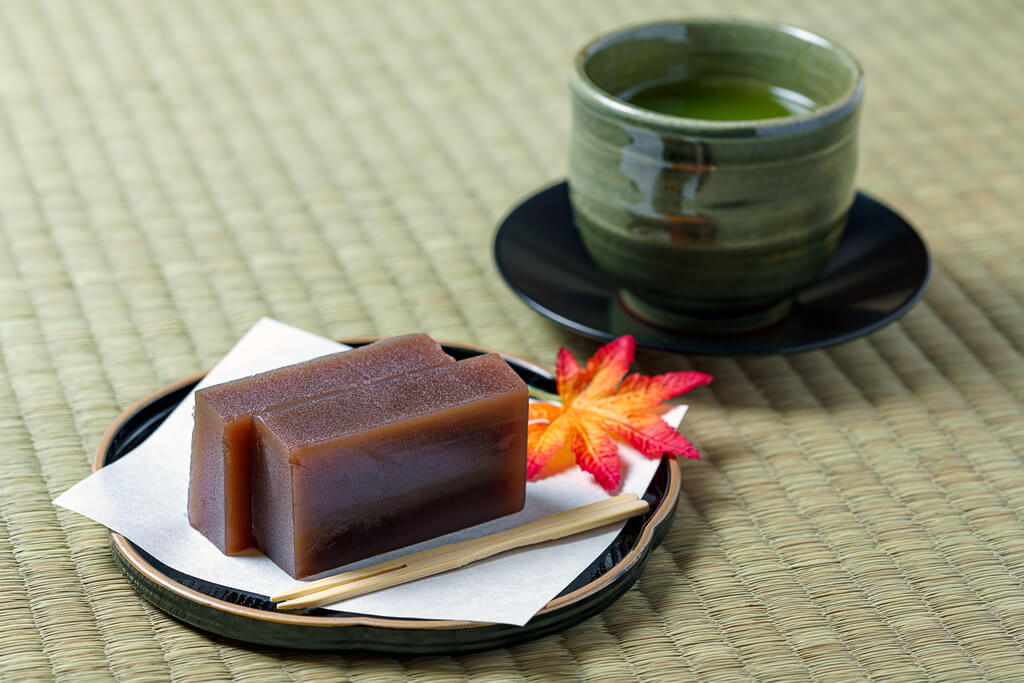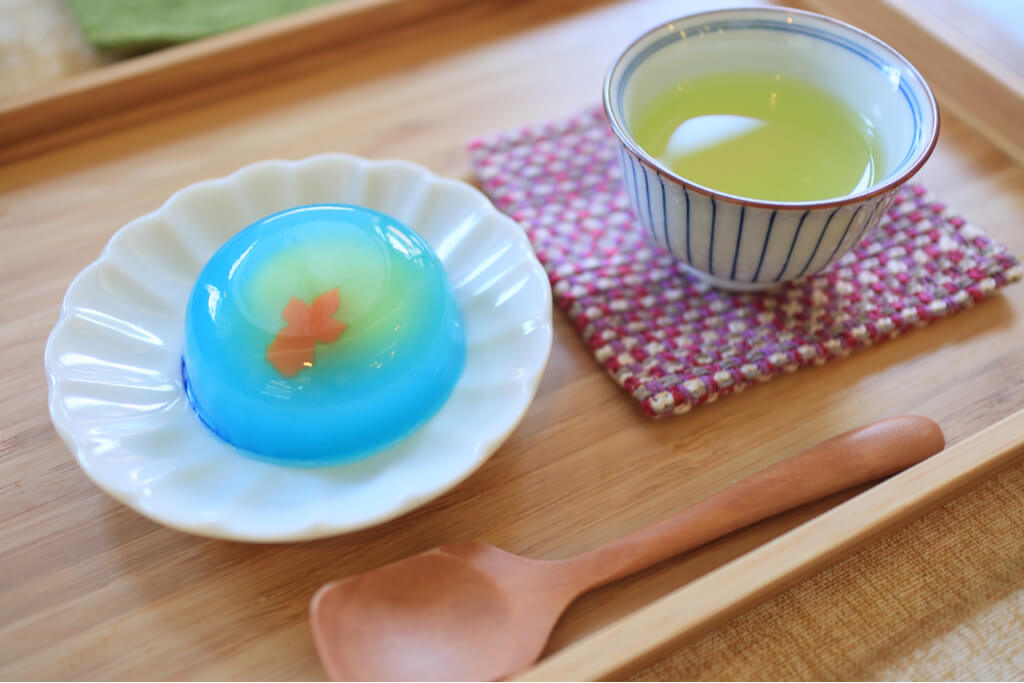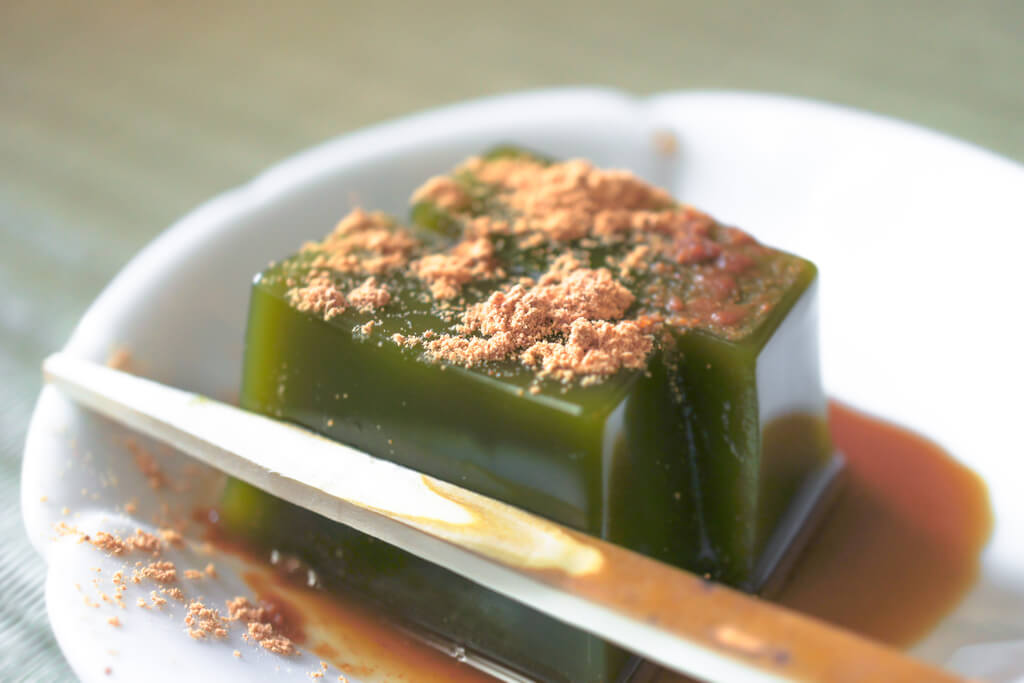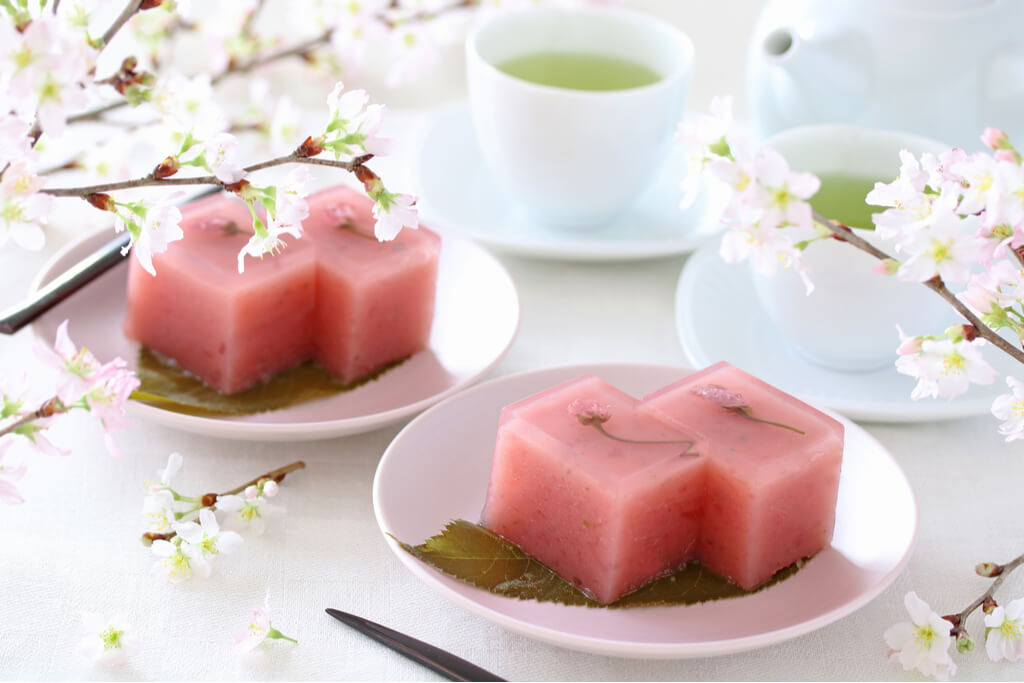Yokan, a traditional Japanese jelly candy, is one of Japan’s oldest sweets. This block-shaped, translucent, subtly colored snack is unassuming in appearance but is a sophisticated Japanese dessert with countless variations appealing to modern tastes.
This snack uses red bean paste, agar, and sugar, and it is one of the oldest in Japan’s line-up of traditional confectioneries. Its block-like shape and translucent, subtle coloring make it one of the most unassuming. But don’t be deceived! Yokan is a subtle, sophisticated Japanese dessert with countless variations sure to appeal to modern tastes.
Table of Contents
ToggleWhere did yokan come from?
Yokan was first introduced to Japan from China around 1191. The word itself contains several clues about the origins of this jelly dessert. Yokan, written 羊羹, contains both the Chinese character for ‘sheep’ (羊) and ‘broth’ (羹). Initially, it was a Chinese jelly derived from boiling sheep gelatin while making mutton soup.
Once cooled, the gelatin in the soup solidified into a texture similar to jelly. However, the monks who imported the dish into Japan were vegetarian. As such, they developed a new yokan using Japanese azuki beans, also called sweet red beans, anko, or adzuki beans. This is the yokan we’re familiar with today

What are the different types of yokan?
There are three main types of yokan today: neri (paste), mizu (water), and mushi (steamed). Neri yokan is the quintessential Japanese jelly candy, using a sizable portion of agar to make the resulting jelly stiff and paste-like.
Mizu yokan, on the other hand, uses less agar and more water, producing a lighter, smoother jelly. Thanks to its high water content, it is trendy in summer, when it’s a sweet, refreshing snack. Finally, mushi yokan omits agar entirely, giving the jelly structure by incorporating wheat or arrowroot flour and steaming the result.
Although typically made using sweet red bean paste, another variety of yokan uses shiro-an or white kidney bean paste instead. The difference in taste is subtle, creating a milder and milkier jelly than the traditional version. Yokan using shiro-an can also be made in any of the three ways above, and some yokan artisans even like to use white kidney bean and red bean paste to create elaborate, eye-catching patterns in their jelly.
Want to delve deeper into the world of wagashi? Try Sakuraco! Sakuraco delivers authentic Japanese snacks and sweets right to you and ready for tea time.
What additional varieties are there?
While much yokan is still served plain, some varieties incorporate fruit nuts and toppings. Some of the most popular of these include imo (sweet potato), made with Japanese sweet potatoes instead of adzuki beans; kuri (chestnut); and matcha (Japanese green tea), made with shiro-an (white bean paste) and then both colored and flavored with green tea powder. You can also use crumbly, nutty kinako soybean powder, an excellent option.

How do I make yokan?
If you live in Japan, yokan is easy to get your hands on. It is readily available in wagashi specialty shops and grocery stores nationwide. Also, plenty of online stores are taking advantage of its long shelf-life to sell yokan overseas with fast and free shipping. However, there’s another way to get these jelly desserts into your life without waiting: making it yourself!
That’s right—yokan is easy to make at home, with tons of Western and Japanese recipes online to help you make the perfect red bean jelly. Base recipes usually call for as few as four ingredients: red bean paste, water, salt, and kanten agar powder.
First, you’ll need to dissolve the kanten agar powder with water in a small saucepan, whisking and simmering until the powder has completely dissolved. Then, incorporate the red bean paste and salt, stirring until combined, before removing from the heat and letting the mixture cool slightly.

What do I do after the mixture has cooled off?
Once the mixture has cooled enough to handle but not so much it has begun to solidify, pour it out onto a prepared pan. A traditional Japanese dish ideal for this purpose is a nagashikan (a pan mold for eggs or tofu), but any regular baking dish or heat-proof plastic container will do.
If using any additives, such as store-bought kuri kanroni (chestnuts in syrup), you’ll want to make sure only to pour out a thin layer of your jelly mixture. Wait until this base layer has cooled and hardened. Then you can place your chestnuts, white peaches, or other filling on top before covering the rest of the mixture.
Finally, it’s time to play the waiting game: cool the mixture for a short time on the counter before transferring it to the refrigerator for approximately two hours or until completely chilled. All left is carefully removing your jelly from the container, slicing it into cubes, and enjoying!
Why should I try yokan?
Yokan is one of the oldest and simplest traditional Japanese sweets, making it one of the most accessible. Its plain, geometric presentation evokes the calming beauty of Japanese minimalism. At the same time, its subtle flavor profile and light sweetness make it the perfect complement to a cup of rich, bitter matcha.
Best of all, it’s completely customizable, with variations incorporating figs and persimmons, alternate sweeteners like honey and brown sugar, and even the option of supplementing the main ingredient of sweet red bean paste for lighter, milkier shiro-an. Have you ever had yokan before? Let us know in the comments below!











2 Responses
The Yokan that I buy lists sugar as the primary ingredient Was sugar available in Japan in the 12th century?
Hi Mg, it was already available but not widely known. However, the first yokan was originally made from sheep gelatin. 😊